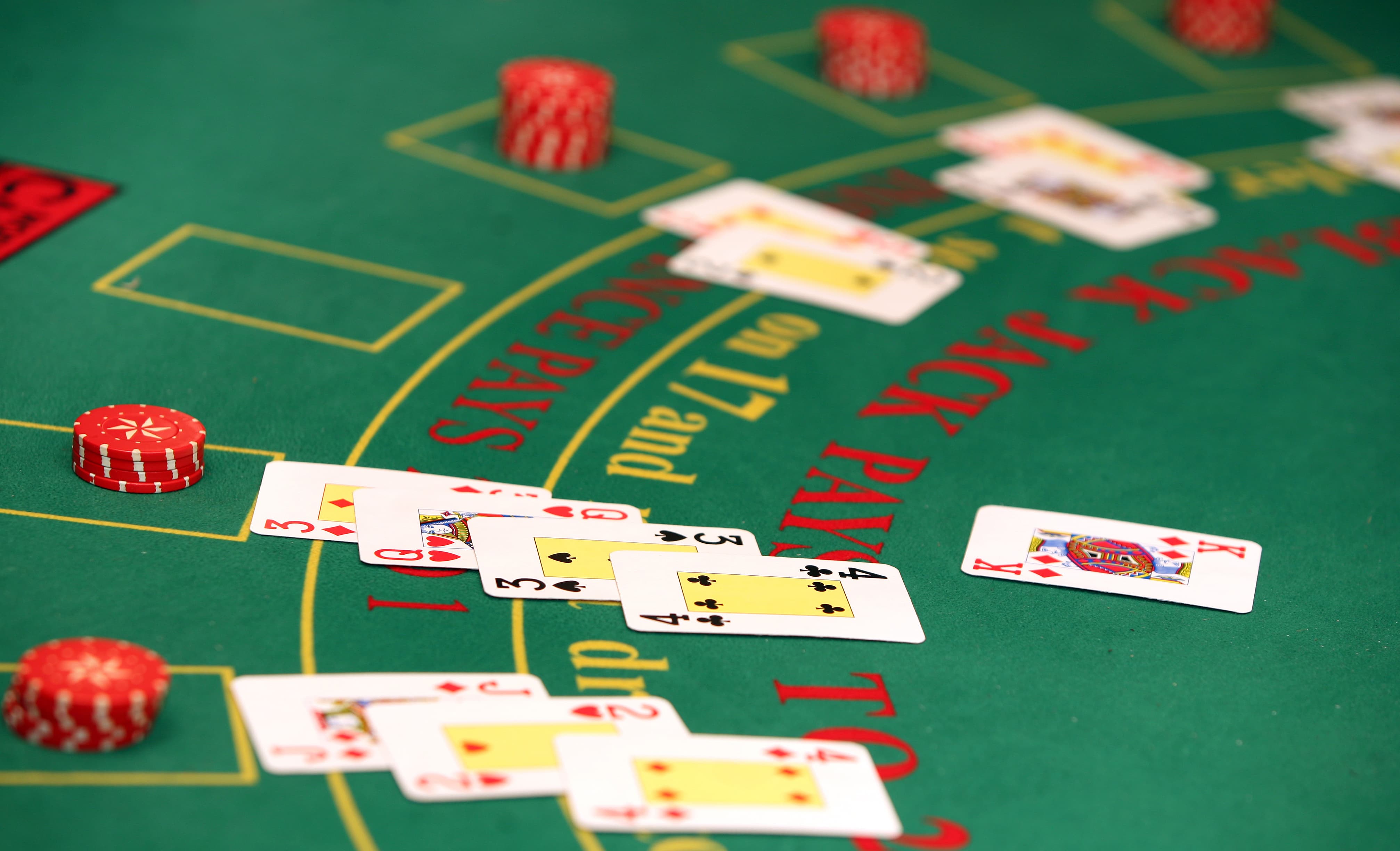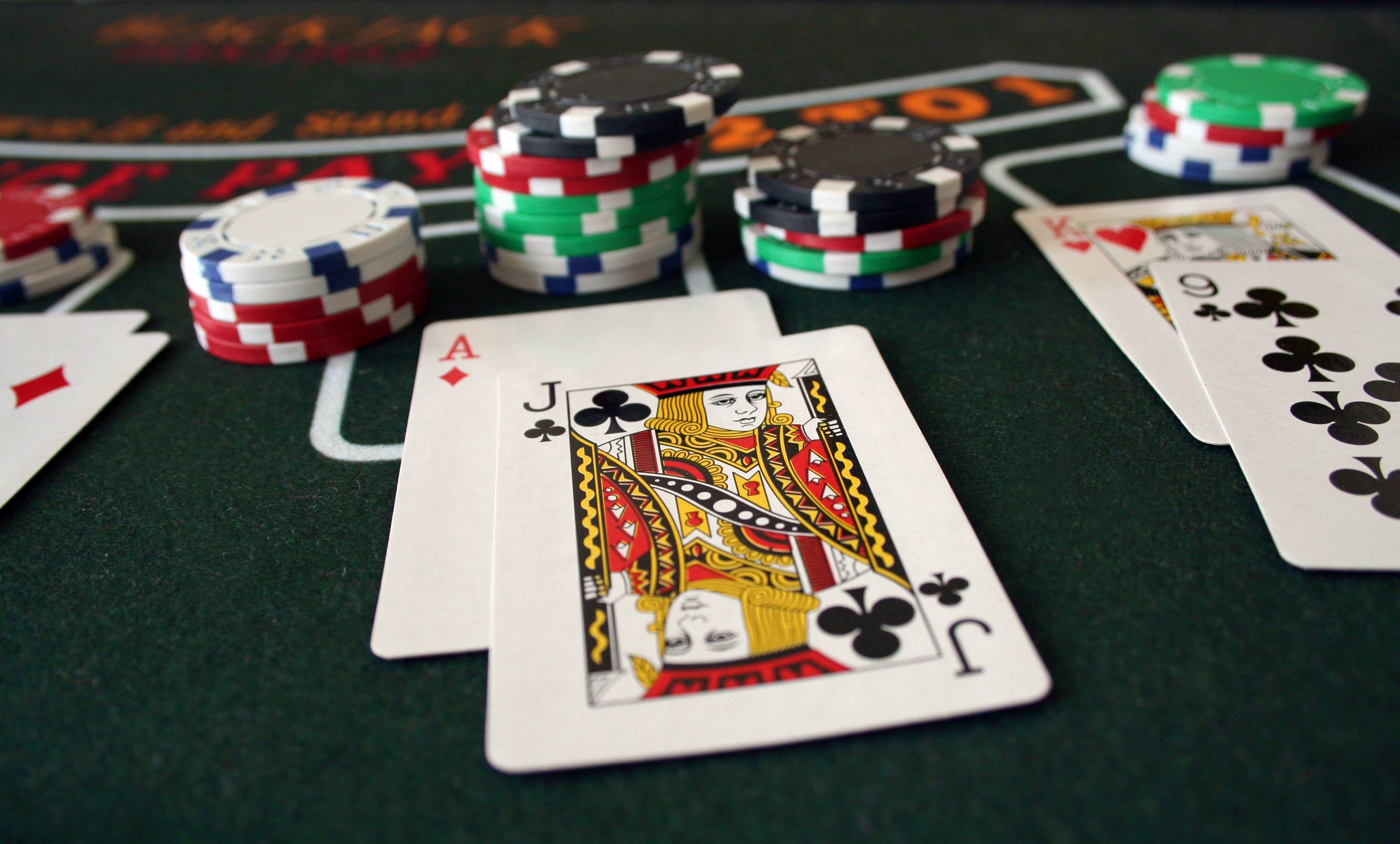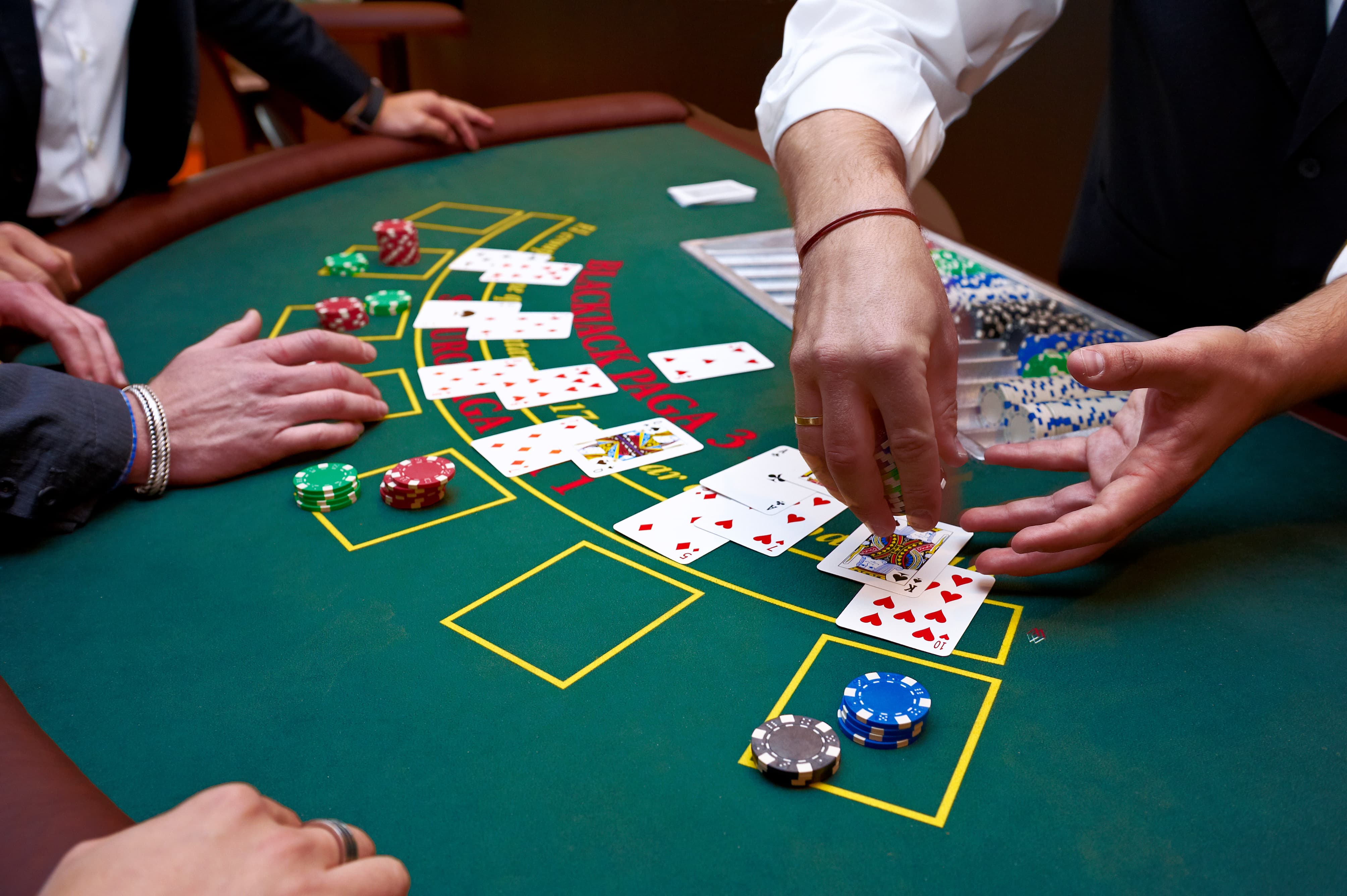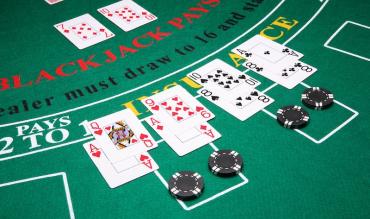Knowing blackjack card values is essential to playing blackjack well. It’s the first step to take when a beginner is learning how to play blackjack. If you’ve ever asked yourself, “how much is an ace in blackjack?” or need a complete blackjack card reference, this guide has you covered.
We’ll walk you through the full breakdown of card values and explain how this knowledge is important in your decisions at the table. Mastering card values, especially when paired with blackjack basic strategy, can help lower the house edge to less than 0.5%.
This guide explains not only the numerical worth of each blackjack card, but also the crucial concepts of hard and soft hands. Stick around to learn everything about blackjack card values!
Blackjack Card Values Chart
Blackjack uses a conventional deck of 52 playing cards. Each deck contains the following cards and their corresponding point value:
| Card(s) | Point Value |
| Ace | 1 or 11 |
| 2, 3, 4, 5, 6, 7, 8, 9 | Face Value (e.g., 3 = 3 points; 8 = 8 points, etc.) |
| 10, Jack, Queen, King | 10 |
If you’re playing a single-deck game, there are 16 cards worth 10 points. That’s about 30% of the whole thing. So, you're more likely to pull a ten than anything else.
NOTE: Card suits have no meaning in blackjack.
If this article interests you, keep reading. Alternatively, explore other topics like blackjack side bets and craps strategy.
How Much is an Ace in Blackjack
An ace in blackjack can count as either 1 or 11 points, depending on which best benefits your hand. Aces are the only cards in blackjack that can shift in value.
Usually, they count as 11, but if that pushes your total over 21, they drop to 1 instead. If you’re dealt an ace early on, treat it as 11 to start with. You can always change that if things take a turn. That flexibility is what makes aces so valuable. Pretty simple, right? Examples:
- Ace + 5 = 16
- Ace + 3 = 14
In both cases, the ace starts out counting as 11. But if you draw a card that pushes your total over 21, the ace automatically switches to 1.
Take the first example. If you have Ace and 5, and then draw a Queen, that would normally be 26. But the ace shifts to 1, so it’s actually 1 + 5 + 10, giving you 16.
Same idea with the second hand. If you go Ace and 3, then pull a 9, the ace drops to 1 again, making the total 13. If it had stayed at 11, you’d be sitting on 23 and bust.

Picture Card Values
Now, you may ask one of these questions:
- How much is a Queen in Blackjack?
- How much is a King in Blackjack?
- How much is a Jack in Blackjack?
The answer is the same regardless. Face cards (Jacks, Queens and Kings) are all worth 10 points.
How to Calculate Hand Totals in Blackjack
In blackjack, the total of your hand is just the sum of your cards’ point values. It doesn’t matter what order the cards come in; only the total counts. Here are examples using the blackjack card values:
Simple hand calculations:
- 4 + 5 = 9
- J + Q = 20
- 10 + 6 = 16
- 5 + 9 + 7 = 21
Hands with Aces:
- Ace + 5 = 16 (ace counts as 11)
- 4 + Ace + King = 15 (ace counts as 1)
What is a Blackjack Hand?
A blackjack happens when your first two cards add up to 21 (an ace with a 10 or a picture card).
The difference is that kind of 21 beats any hand the dealer builds with more than two cards. Yes, even if it adds up to 21! So if you’re holding an Ace and a King, you’ll win against something like 9, 2, Queen, even though both total 21.
Please note: If you split a pair of aces and one of them gets a 10, that hand does make 21, sure, but it’s not counted as a blackjack. It’s still strong, just not the real thing.
Examples of Blackjack hands:
- 10 + Ace = Blackjack
- Queen + Ace = Blackjack
- King + Ace = Blackjack
- Jack + Ace = Blackjack

Hard vs. soft Hands in Blackjack
Two hands can add up to the same number, but still play completely differently. Take 17, for example. If it’s made with an ace and a 6, that’s a soft hand, and you’ve got more flexibility. But if it’s a 10 and a 7, it’s hard, and you’re locked in. That’s why it matters to know what kind of 17 you’re working with before you make your next move.
Hard Hands
A hard hand either contains no ace or counts any ace as 1. Hard hands cannot change their total value without drawing additional cards.
Examples of hard hands:
- 10 + 8 = hard 18
- 5 + Ace + King + 2 = hard 18 (ace counts as 1)
Soft Hands
A soft hand contains an ace counted as 11. Soft hands offer flexibility because the ace can change from 11 to 1 if needed to prevent busting. You can never bust when drawing one card to a soft hand!
Examples of soft hands:
- Ace + 5 = soft 16
- Ace + 3 + 4 = soft 18
- 3 + 2 + Ace + Ace = soft 17
Hands can convert from soft to hard when additional cards are drawn:
- Starting hand: Ace + 4 = soft 15
- After drawing 8: Ace + 4 + 8 = hard 13 (ace now counts as 1)
Splitting Rules for Same-Value Cards
Most blackjack casino games let you split your starting hand if your two cards are of the same value. When you split, you basically turn one hand into two. And yes, you’ve got to place a separate bet for each. This applies to any pair, whether it’s two eights, two kings, or even two tens.
Splitting examples:
- Queen + King (both worth 10)
- Jack + 10 (both worth 10)
- King + King (both worth 10)
- Any identical numbered cards (7 + 7, 8 + 8, etc.)

Why Card Values Matter in Blackjack
If you’re trying to get better at blackjack, you need to start by understanding how the cards work. It’s not complicated. Aces can be 1 or 11, depending on what helps your hand. Face cards like Kings or Jacks are worth 10, and the rest just count as their number. Simple stuff, but don’t brush it off. These basics shape every decision you make at the table.
Get comfortable with the values, learn some blackjack basic strategy, and you can actually get the house edge down to about 0.5%. Not bad for a casino game, right? Everything else, such as counting cards, advanced strategies, and all that fancy stuff, builds on this foundation. So start here.
FAQ - Frequently Asked Questions About Blackjack Card Values
How much is an ace in blackjack?
Aces are tricky. They can be worth 1 or 11, depending on what works better for you. The game treats them as 11 first, but if that would bust you (go over 21), they automatically become 1 instead.
How much are face cards worth in blackjack?
Face cards are easy: jacks, queens, and kings are all worth 10. Same as a regular 10-card.
What's the difference between hard and soft hands?
A hard hand either contains no ace or counts any ace as 1. A soft hand contains an ace counted as 11. One nice thing about soft hands is that they give you peace of mind. Since the ace can switch between 11 and 1, you won’t bust no matter which card you get dealt.
What’s the difference between a blackjack and a regular 21 points hand?
A true blackjack means you got to 21 with your first two cards, like an ace and a King. But if it takes three or more cards to reach the same number, that’s not considered a blackjack. Same total, different status.
Do card suits matter in blackjack?
No, card suits have no meaning in blackjack. Only the point values matter for gameplay and hand calculations.
